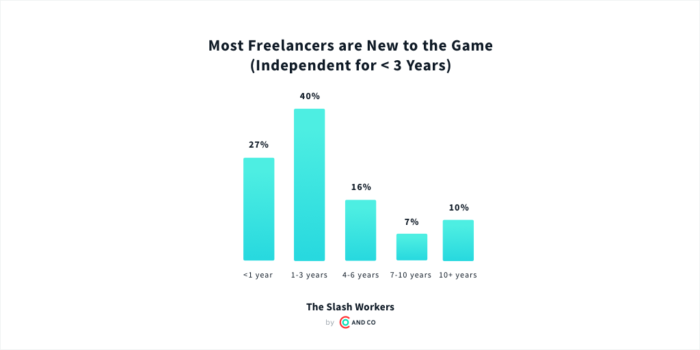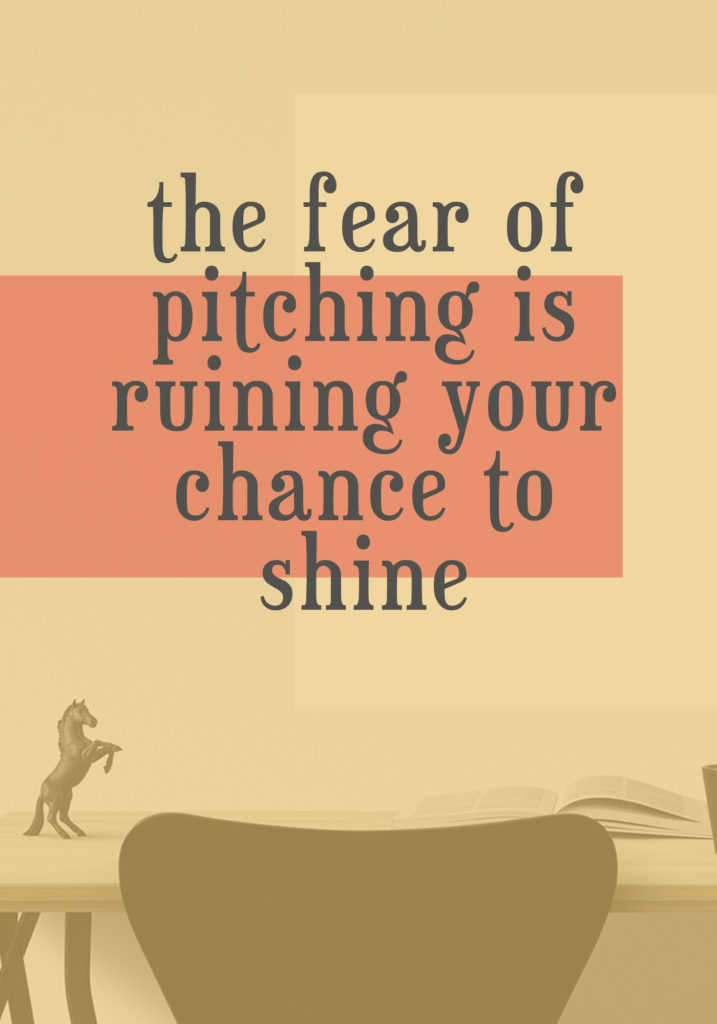When someone says no to you, does it feel like a punch in the gut? Do you shrink a little inside and want to curl up in a ball and forget it ever happened?
Oh, you are so not alone.
This is the physical implications of rejection in full swing, but let’s not get ahead of ourselves.
After my last post, I asked you, dear readers, what your biggest fear is when it came to pitching, and the results were not surprising in the slightest.
Answers rolled in like:
- “I’m afraid clients will see that I don’t have enough experience”
- “What if I’m not as good as everyone else and the client is laughing at me behind my back?”
- “I’m worried I’m going to annoy people by intruding in their inbox”
- And the best one – “I don’t think I’m cut out for it”
It’s kind of morbidly distressing reading those, right?
But there’s one thing that ALL those answers boil down to, and that’s the fear of being rejected.
Putting ourselves out there in any way, whether it’s dating, applying for a new job, or simply trying to make friends, is terrifying because all we really want in life is to feel accepted and to fit in.
But rejection gives us the opposite of that.
When someone says “no”, we feel like an outcast and like we’re not good enough. Basically, rejection is a legitimate fear when it comes to pitching, but there are ways you can get over it so you don’t freeze up.

The majority of freelancers are new to the business and trying to build a roster of clients. Source.
I remember when I started freelancing. I knew I needed to send out cold pitches and make connections with potential clients, but the thought filled me with dread.
Part of the reason I’d gone freelance in the first place was so I didn’t have to talk to anyone and yet, there I was, having to lay myself bare for people in high-up places to batter me down.
Not a fun feeling, and definitely not a good look.

Fear of Pitching is Perfectly Natural
The tricky thing about overcoming the fear of pitching as a freelancer is it’s so innate.
It’s about mindset, more than anything.
It’s not something you can learn overnight or read up about. It takes practice (and reading a whole load of cold email tips!) to distance yourself from the feelings of fear and rejection, but if there’s anything I’ve learnt over the past three years, it’s that it is possible to not turn into a quivering wreck every time you need to send a “will you hire me?” email to a new prospect.
Here’s my three-step approach for you to devour.
1. Separate Yourself from Your Work
As creatives, it often feels like our work is inextricably linked to our souls. We are our work and our work is us.
When I was working for someone else, I happily shot off pitches left, right, and centre without any worries. I didn’t even think twice about hitting the send button, and I certainly didn’t sit in a sweat refreshing my inbox over and over again until I got a reply.
Why?
Because I was once removed from the whole situation. I wasn’t pitching my business, I was pitching someone else’s, so it wasn’t a personal slight on me if I got rejected.
On the flipside, my early freelance days were not so easy.
It felt, in part, like I was selling a part of myself when I pitched potential clients, so when they said “no” or I didn’t get a response, it felt like they were actually rejecting me as a person, not what I was offering them.
How to successfully separate yourself:
First and foremost, you are not your work. Just because a potential prospect says no to your services, that doesn’t mean you’re a bad person.
They might not need what you’re offering at that time; they might already have someone else who’s doing that for them; they might not be aware of the value your service can give them.
Basically, there could be a million and one reasons why they said no, but I guarantee none of them are because you’re a terrible person (which, for the record, you’re not).

2. Know That You’re Offering Value
Sending cold emails can often feel spammy.
We’re turning up, uninvited, into someone’s private online space and basically shouting “HEY, DO YOU WANT A PIECE OF THIS?” through a megaphone.
Well, that’s what it feels like, anyway.
The key thing to remember is that you’re not offering them a slap in the face; instead, you’re offering them something that can help their business or their lives. You’re offering a solution to a problem, and people will love you for that.
I mentioned in my last post that the quality of your pitch is ten times more important than how many you send out on any given day, and that’s one of the things to bear in mind when you’re pitching.
If your pitch is good enough, it won’t feel like you’re adding to the pile of spam.
How to know that you’re offering value:
It’s hard knowing whether your pitch hits the sweet spot right off the bat. In fact, it takes some trial and error to come up with a pitch that converts like you want it to, but there are a couple of things you can do to speed along the process.
- Make sure your pitch is about the client rather than about you
- Highlight the problem you’re solving and how you can help solve it
- Keep it short and sweet so you’re not requiring any more of their time than necessary
- Believe in what you’re selling!
When I feel like I’m not providing enough value, I go back through my folder of testimonials. That usually does the trick. If you don’t have any testimonials yet, though, take a look at other freelancer sites and read their testimonials.
See how valuable freelancers are?!
3. Be Yourself – Clients Are Looking for a Good Fit Not the Best
Be yourself is such cliché advice, but it’s actually a pretty important thing when running a business.
You’ll be working closely with a range of different people and if you kick things off by being a different version of you, you’re going to a) struggle to keep up the charade, and b) struggle to find clients you like working with.
The best piece of advice I can give you here is that clients are looking for a good fit, not the best.
Sure, if they’re looking for a writer, they want someone who can write well and boost conversions and do all sorts of fun stuff, but they also want someone who can fit into their team and that they can rely on.
Think about it this way: say you’re up against another freelancer who has the same experience and skills as you, and the client is struggling to choose between you both. Now it comes down to who they like the best.

Which, I know, is contradictory to the whole “separate yourself from your work”, BUT hear me out.
Being yourself is a great way to sort out the wheat from the chaff and find clients you love working with. I mean, do you really want to work with someone you don’t get on with? The answer is no, if you had any doubts.
How to be yourself:
I’m really not about to sit here and tell you how to “be yourself”, but I will say this.
If you’re worried about not being as good as other freelancers out there, remember that clients aren’t always looking for the best. They’re looking for the right person, and that person might not have 20 years’ experience, but they might have a love of dogs and enjoy long walks on the beach like the rest of their team.
You Miss 100% of the Shots You Don’t Take
I’m going to finish with this sentiment that makes me feel both empowered and terrified at the same time.
Let’s face it: being a freelancer means you need to have clients, and to get clients you need to put yourself out there. It’s a trade-off we have to make, and it’s often an uncomfortable one.
But, like with anything, practice makes perfect. Those first few pitches are going to be sweaty and scary, but after that? It’ll get easier, I promise.
Rejection is a horrible thing and you’re not alone in fearing it – in fact, there are around seven billion other people right there with you – but by not taking the shots (or sending out those pitches), you’re not going to get the clients you need to keep your business on the up.
So what do you say? Shall we throw caution to the wind and open ourselves up for a good old-fashioned bit of rejection?







Lizzie – I just have to say it’s rare I find an article so insightful, relevant, useful and well written too. The perfect piece.
Adeline
Thanks, Adeline – that’s made my day!
You make some really great points here! And it’s so true; you DO care more (and stress more) when it’s YOUR business vs when you work for someone else. Let’s face it, you can grab any meaningless job, but your business is your baby… and that’s why pitching is so important: no clients = no business!
That’s exactly it, Noelle – your business IS your baby, which is often why pitching feels so personal. But, like you say, it’s SO important if you want to get clients!
I believed all of those myths when I first started pitching. That’s why I didn’t pitch for almost 6 months when first starting my freelance writing business. I have almost completely gotten over these fears as of now after over a year of owning my business. I now don’t think anything about sending cold pitch emails to prospects. I actually find it to be quite a bit of fun, if I’m honest with myself.
That’s great, Lizzie! When pitching gets to the fun stage, that’s when you know you’re completely over your fear 🙂 so glad you got there!